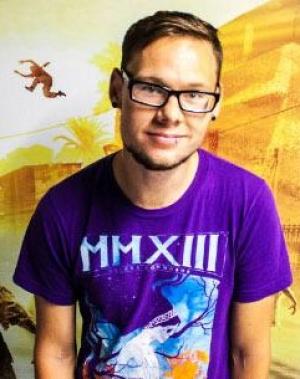After hitting a high note with the cooperative zombie shooting game, Dead Island, the development studio Techland decided to independently take on an even bigger project. That game turned out to be Dying Light, and in it, players could free run across an huge quarantined city to scavenge supplies, craft weapons, and do everything they can to survive against the undead hordes. Or, they could play as zombies that become supercharged once the sun goes down, to hunt down the remainder of the living population.
The game released in January, and despite heavy competition from games like Grand Theft Auto V and Call of Duty: Advanced Warfare, Dying Light broke records and defied expectations by selling over 5 million copies in its first six months. It was among the top 10 bestselling video games for the first half of 2015, and a major expansion called The Following will release early next year.
 [a]listdaily spoke to Paul Milewski, PR Manager and Marketing Coordinator at Techland, about fighting zombie hordes and what it takes to independently promote an exceptional game.
[a]listdaily spoke to Paul Milewski, PR Manager and Marketing Coordinator at Techland, about fighting zombie hordes and what it takes to independently promote an exceptional game.
What was your reaction to Dying Light‘s success
Dying Light’s success caught us quite off guard. We always felt we had a good game but when you work that closely on something for so many years it’s easy to forget. So to anyone who helped make this game our biggest success to date, thank you so much!
What sets Dying Light apart from other zombie-themed shooters
A lot, actually. Our natural movement system is something that has never really done in first-person action games on this level. Our dynamic day and night cycle that totally changes how the game reacts and how you play makes it seems like it’s 2 types of games in 1. Then there is our creative brutality and combat which is focused primarily on melee fighting plus our open world design set in a region and style that not many games would normally consider using as their sole location. Then add in the ability to take on all the above with up to 4 friends is seamless co-op.
What was the most effective way to get the word out about Dying Light
A lot of the promotional material we make is from a fan-first point of view, so our social media channels (Facebook and Twitter primarily) is where almost everything we do will get pumped into at the same time as it’s released to the general public.
Dying Light released last January. How have you been able to keep players interested in the game for the year leading up to The Following expansion
Since the release of the game we’ve done tons of post launch support. Free updates like new a difficulty level, new challenge missions, new weapons etc. We’ve engaged with our fans with custom challenges or special one day events where we tweak the in-game settings for 24 hours. We’ve also been hard at work on big add-ons. The biggest being this expansion pack Dying Light: The Following, which is a totally new map, an additional storyline and drivable dirt buggies that we’ve designed to be your deadliest weapon yet.
It was recently revealed that The Following expansion is so big that it could have been a standalone game. What went into the decision to still release it as an expansion
We just didn’t want to delay this release anymore. Making a standalone requires a different approach from design right through to distribution. Our fans have been asking for this expansion, and to turn around and say “Wait some more,†just didn’t seem fair.
How different is promoting Dying Light and its expansion from promoting Dead Island and its follow-ups
The promotion of Dying Light is 100 percent in our hands, so we’re able to get a lot more creative on a product we know like the back of our hands.

